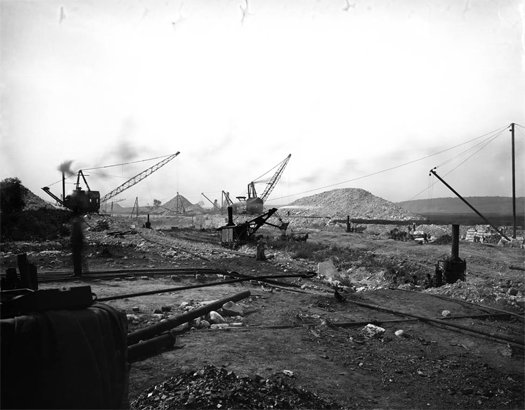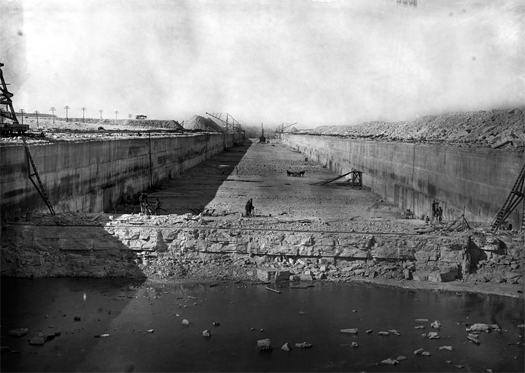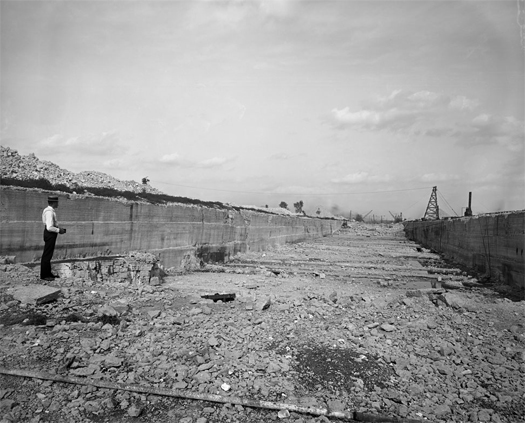


One of the more spectacular engineering accomplishments of the United States in the late nineteenth century was the reversal of the Chicago River. Through the construction of a series of canals — most notably, the Chicago Sanitary and Shipping Canal, seen under construction in 1896 above — the river was made to flow not into Lake Michigan, as it did when Europeans arrived in Illinois, but away from Lake Michigan and towards the Mississippi, which it had not done since the area was covered by the prehistoric glacial Lake Chicago. As Scott Huler explains in On the Grid, this was done because of fecal matter: “…the outfalls of the sewers made such a mess of Lake Michigan that during large rainstorms the plume of tainted water flowed all the way out to the intake for the water system”, contaminating the city’s water supply.
[The images above are from the Field Museum Library’s Urban Landscapes of Illinois collection on Flickr.]


nice! this, of course, is dear to my heart. The fate of first generation industrial canals is intricately intertwined with scatological landscape studies…
Note all the instrumentality evident as well…
Those are some heroic images…
Studio Gang have just produced a book on the effect of reversing the flow of the Chicago river, appropriately titled ‘Reverse Effect’. There are moves to correct this industrial age intervention, the carp have gone bananas apparently. http://www.studiogang.net/news/updates/2011/10/reverseeffect
Nice! Thanks for the heads-up.